Red Light Secrets Museum of Prostitution: A review
What I expected on visiting Red Light Secrets Museum of Prostitution was a presentation that titillates and that presents prostitution as a happy profession with practitioners who choose to become prostitutes.
Note: I’ve added with some remarks from a “part time excort whore” who commented on this post on Twitter. See below.
Disclosure: This post contains affiliate links. That means I’ll receive a small commission on anything you buy through clicking the links. This will not affect your price.
[Last updated October 10, 2025]
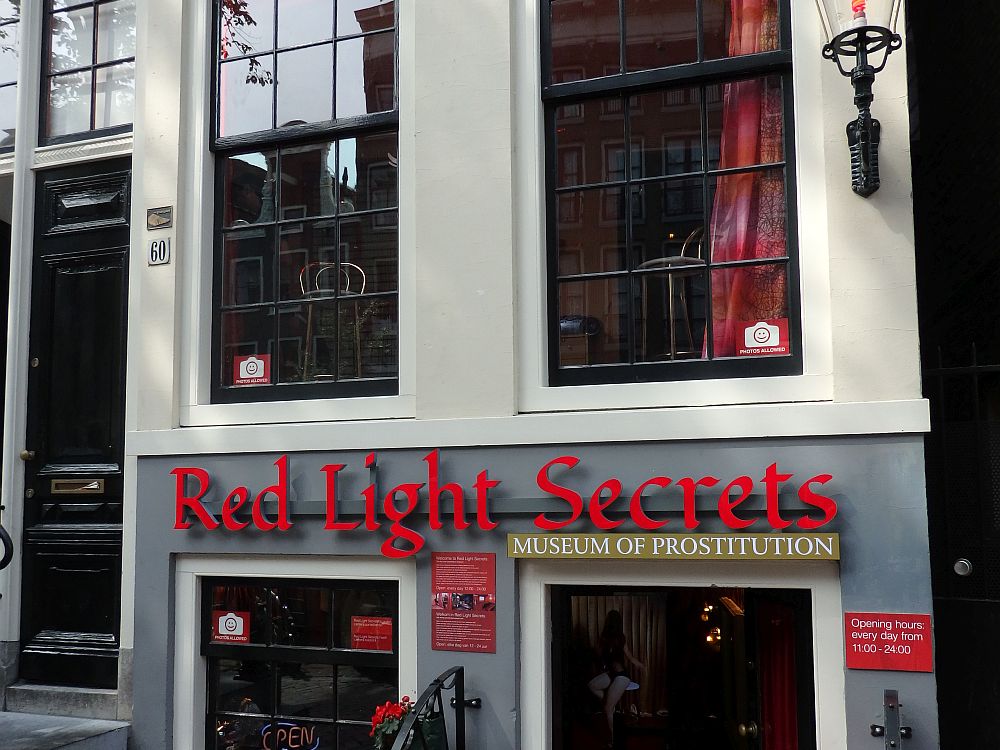
I expected that because I had read several blog posts by visitors to Amsterdam that made it seem this way. They emphasized the fun of pretending to be a prostitute in a window in the Red Light District, for example. Very light-hearted, almost mocking posts, written from the point of view of a tourist passing through Amsterdam quickly.
Red Light Secrets’ own website also leans toward the prurient side: emphasizing the audio stories of Olga, “Amsterdam’s most famous lady of the night” and promising that visitors will “learn all about the secrets of the world’s oldest profession.”
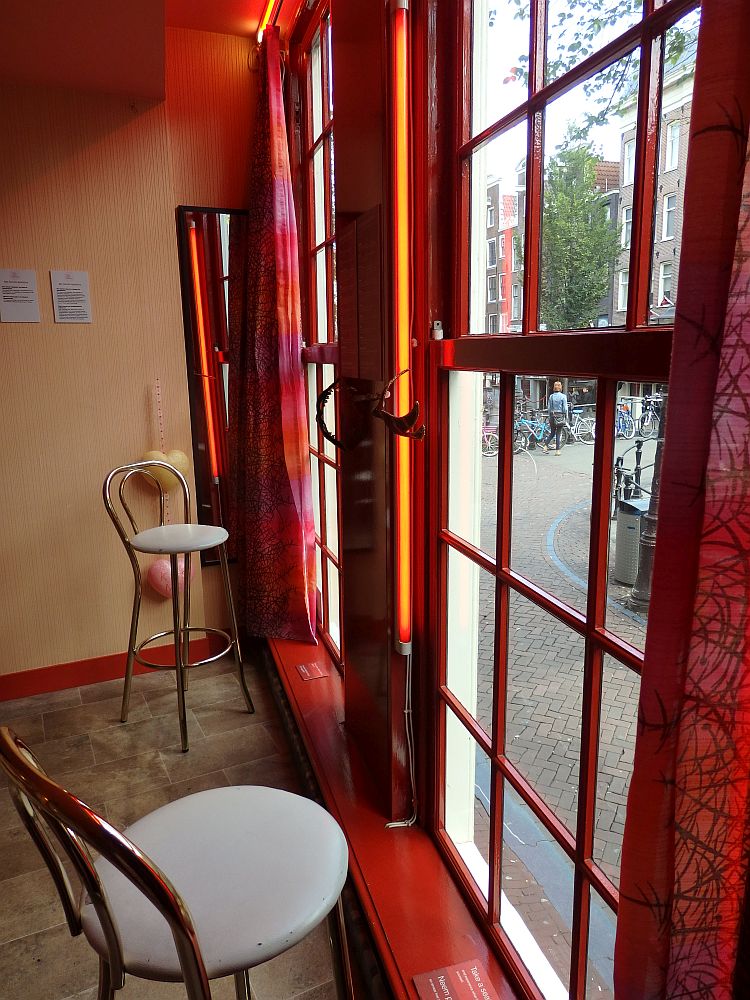
What I got was far more serious, not particularly titillating, except maybe the room devoted to bondage and sado-masochism. The museum points out clearly a) the dangers prostitutes face daily, including a display listing murdered prostitutes next to a small altar, and b) that many women get into prostitution against their will.
The Red Light District
I should warn you that the museum is smack-dab in the middle of the Red Light District. It’s one of the oldest areas of Amsterdam, lined with beautiful brick rowhouses along picturesque canals. Yet it shouldn’t surprise you as you walk along these pretty streets to see large windows on the ground floor lit with red neon lights, where scantily-clad women sit or stand, waiting for customers. Mostly they look bored.
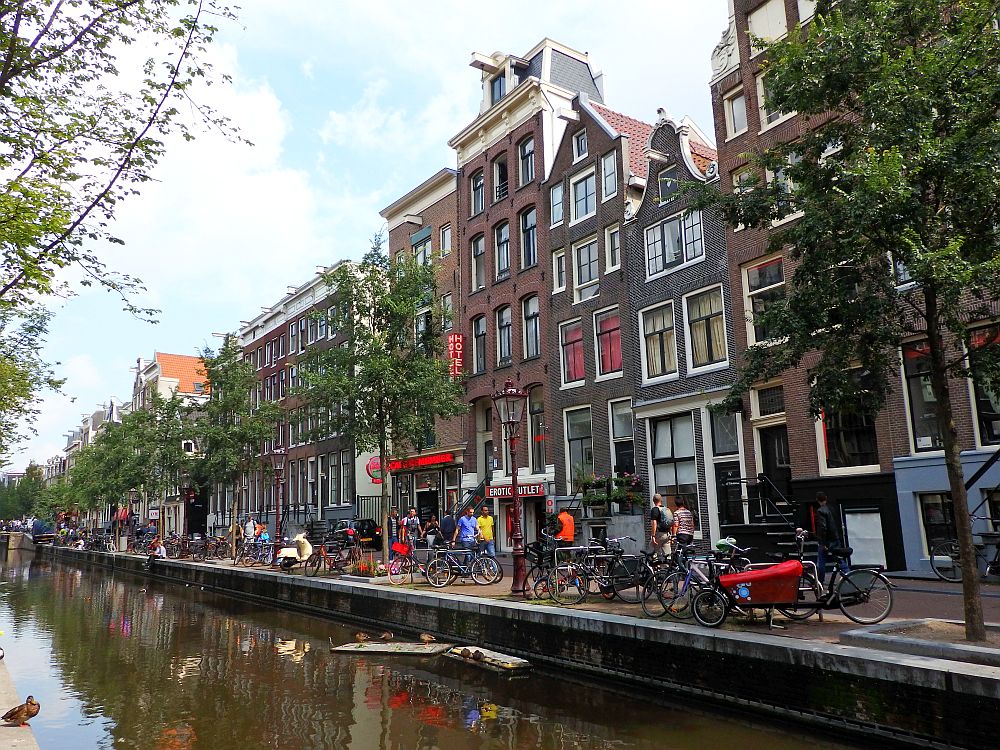
Consider taking a walking tour of the Red Light District.
Prostitution in the Netherlands
The museum also informs visitors of the facts: numbers of prostitutes – to the extent they can be counted – and it details what the actual rules are of legal prostitution. (Yes, legal prostitution is subject to very specific rules: working conditions, pay, health checks, rental charges for their windows, taxation, client behavior.)
Mostly the museum conveyed to me a feeling of sadness. The goal seems to be that visitors gain some respect for women in prostitution, and it succeeds to some extent, but I mostly felt sorry for these prostitutes, both the legal and illegal, for having to do this for a living. The designers of the museum don’t seem to be asking for pity, however; they emphasize respect.
The museum claimed that 70% of prostitutes are in committed relationships or married. Could that really be so?
You might also like these reviews of other Amsterdam museums:
Effective presentation
In any case, the museum is a remarkably well-presented and well-lit, mix of exhibits and videos. Two small rooms, for example, are representations of how prostitutes’ rooms in De Wallen, the red light district of Amsterdam, might look: one basic, one more upscale. The touchingly ordinary objects in these rooms – stuffed animals, for example – accentuate the humanity of the people involved in this seamy profession.
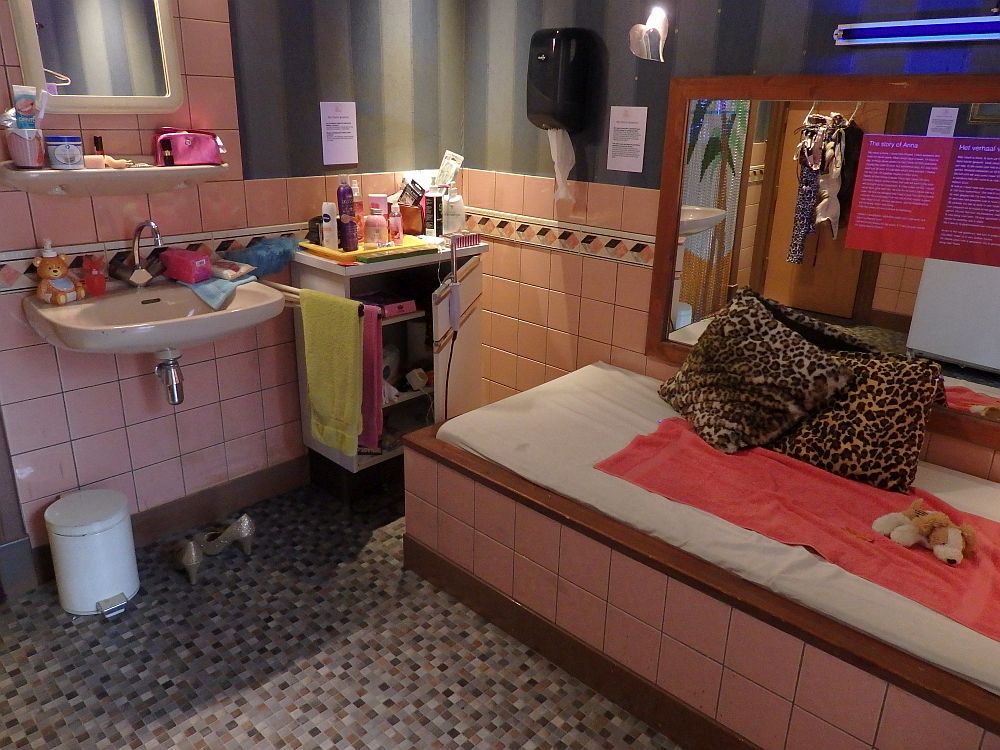
One display is simply a collection of objects that clients have left behind, which must be embarrassing, especially when one of the objects is an ID card that is perfectly readable!
One room is particularly effective in creating empathy with the prostitutes. Visitors sit on high stools, like prostitutes often do in red light district windows, and watch screens the size of windows on the wall. The screens show the scene outside as a prostitute sees it: creepy men ogling them, leering. Some stop and make lewd gestures, then wander away again. Some point and laugh. Disapproving women shake their heads, walking by quickly, tsk-ing. It’s a powerful experience for visitors to the museum.

The 10 Commandments of Prostitution
Visitors to Red Light Secrets learn the 10 commandments of prostitution: a list spelling out the rules of how to treat prostitutes:
- Do not take photographs or film.
- Do not tap or spit on the window.
- Be respectful toward the ladies.
- Do not peek through cracks in the curtains.
- Do not stand in front of the doors or windows.
- When visiting, pay in advance and discuss beforehand what is and is not permitted.
- No unprotected sex.
- Be hygienic (clean and well-groomed, not intoxicated).
- When force or coercion is suspected, call the police on 0900 8844.
- Aggression will not be tolerated, also not on the street.
It’s easy to suppose that all of these things happen; otherwise, a 10 commandments of prostitution wouldn’t be necessary.
One room is a small theater. When I visited, it was showing an excellent ad about human trafficking for prostitution. I don’t think they’re still showing it, but I’ll leave it here anyway because I think it’s still relevant.
Not surprisingly, no one knows exactly how many illegal prostitutes work here in the Netherlands. Lots of safeguards are in place for those working legally, such as the right to turn down a client, to an agreed wage, to set their own working hours, to see an accounting of how much their employer withholds for taxes, etc. Illegals don’t get any of these rights. Red Light Secrets does a good job of presenting both worlds.
Don’t forget to book your accommodations in Amsterdam! Use the map below:
This is an excellent museum, which I would certainly recommend. It presents a measured, intelligent, pragmatic view of an institution that is usually looked at with derision and disapproval. It allows visitors a more nuanced understanding than the popular image of Amsterdam would normally allow.
If you want to buy tickets in advance, you can do so by clicking here.
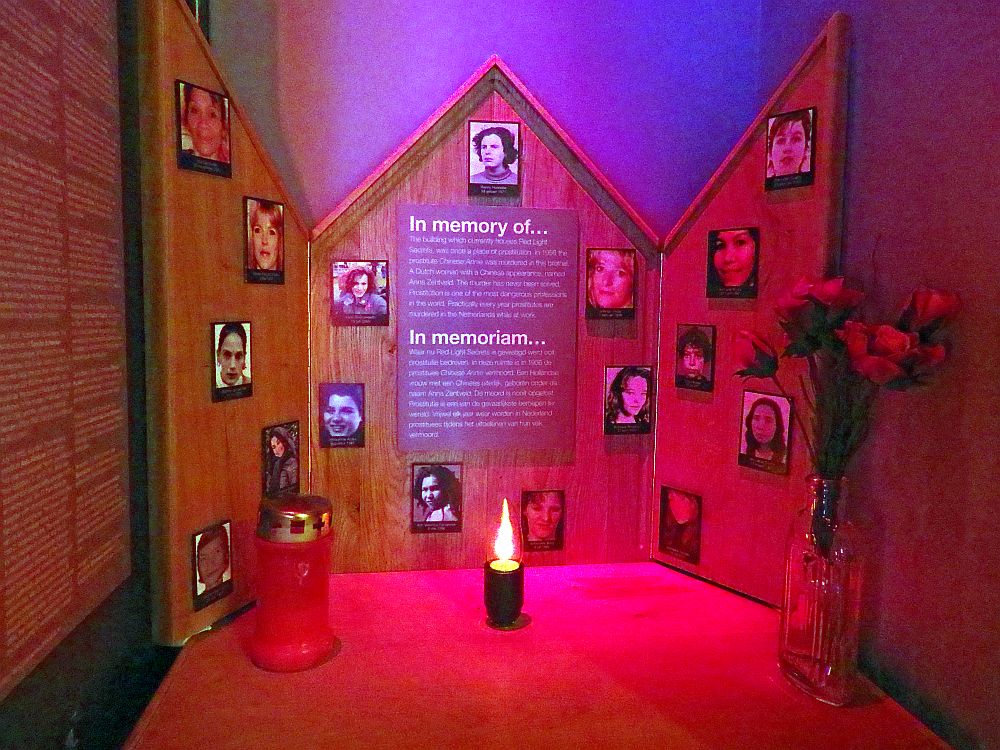
Update: July 3, 2023
I had an interesting exchange with a woman I “met” on Twitter, @KanStaandPijpen, who describes herself as “Part time escort, full time human. Trying to cut through the bullshit believed about sex work.” Here is her response to this article about Red Light Secrets:
“We in the business think it’s just another way to exploit us by presenting us as passive objects of sadness. Just like every other thing about us without us.”
and
“I visited once. I thought it was a shabby attempt to conjure the air of delapidation some brothels try to give off. Information on offer is not that accurate, the emphasis is on making us look like fallen women, and our clients as if they take advantage of us.”
When I responded with “From my outsider’s point of view, it seemed respectful of the women and scornful of the customers,” she added:
“Pity isn’t respect. Painting us as people fallen on hard times isn’t respect. The fact that it is our choice to do this work is de-emphasized to the point of denial. That bothers me, and I’m not alone in that. And our clients don’t deserve scorn.”
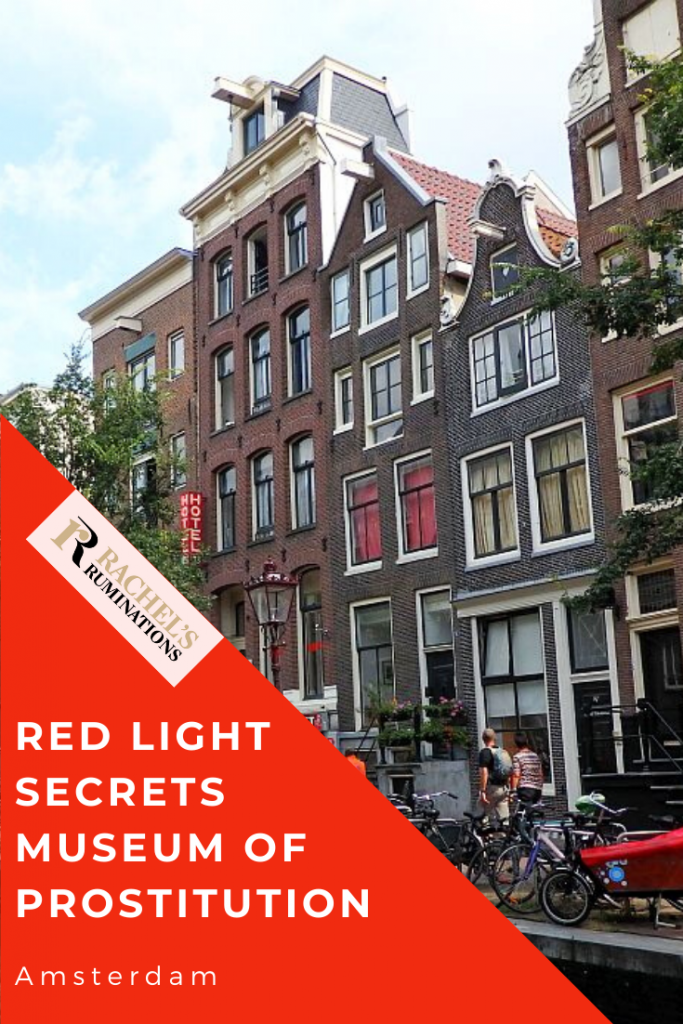
And another point of view…
She also sent me a link to an article (in Dutch), on a website called De ervaringen van een prostituee (The experiences of a prostitute). Scroll down to read her reaction to the museum. The writer also doesn’t think the museum is very accurate, making it all seem grubbier than it actually is. She’s particularly scornful of the museum’s criticism of the clients. She writes that the museum doesn’t show visitors the groups of tourists, especially the English, who take photos and yell, or the people who walk by with condemning looks. In general, she disagrees with the assumption that most of the “girls” are victims in one way or another.
Note: I paid full price and the museum personnel were not even aware of my intention to blog about it.
Have you visited this museum or walked through the red light district in Amsterdam? It’s a common stop on Amsterdam itineraries. What are your feelings about it?
Red Light Secrets Museum of Prostitution: Oudezijds Achterburgwal 60, about a 10-minute walk from Amsterdam Central Station. The nearest metro station is Nieuwmarkt (metro numbers 51, 53 or 54), from which the walk is about 5 minutes. Open daily 11:00-01:00. Must be 16 or older. Not wheelchair accessible. Tickets.
My travel recommendations
Planning travel
- Skyscanner is where I always start my flight searches.
- Booking.com is the company I use most for finding accommodations. If you prefer, Expedia offers more or less the same.
- Discover Cars offers an easy way to compare prices from all of the major car-rental companies in one place.
- Use Viator or GetYourGuide to find walking tours, day tours, airport pickups, city cards, tickets and whatever else you need at your destination.
- Bookmundi is great when you’re looking for a longer tour of a few days to a few weeks, private or with a group, pretty much anywhere in the world. Lots of different tour companies list their tours here, so you can comparison shop.
- GetTransfer is the place to book your airport-to-hotel transfers (and vice-versa). It’s so reassuring to have this all set up and paid for ahead of time, rather than having to make decisions after a long, tiring flight!
- Buy a GoCity Pass when you’re planning to do a lot of sightseeing on a city trip. It can save you a lot on admissions to museums and other attractions in big cities like New York and Amsterdam.
Other travel-related items
- It’s really awkward to have to rely on WIFI when you travel overseas. I’ve tried several e-sim cards, and GigSky’s e-sim was the one that was easiest to activate and use. You buy it through their app and activate it when you need it. Use the code RACHEL10 to get a 10% discount!
- Another option I just recently tried for the first time is a portable wifi modem by WifiCandy. It supports up to 8 devices and you just carry it along in your pocket or bag! If you’re traveling with a family or group, it might end up cheaper to use than an e-sim. Use the code RACHELSRUMINATIONS for a 10% discount.
- I’m a fan of SCOTTeVEST’s jackets and vests because when I wear one, I don’t have to carry a handbag. I feel like all my stuff is safer when I travel because it’s in inside pockets close to my body.
- I use ExpressVPN on my phone and laptop when I travel. It keeps me safe from hackers when I use public or hotel wifi.


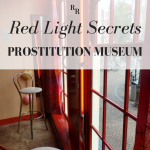

I love your blog posts because you really tell it like it is. After reading this I feel as though I have a clear idea of what to expect at the Red Light Secrets Museum of Prostitution. It seems like a tough way to make a living even with all the safeguards. The tips are definitely handy.
Thanks, Michele! On my blog I try to write my personal reactions to places, not just a standard travel brochure-type description.
I’m so glad the museum presented prostitution in this way. So often people make a joke of it, not stopping to think what life must really be like for the people concerned.
Yes, that’s just what was bothering me when I went there from the other blogs I’d read: the light-hearted way in which people write about it.
I knew when I saw the header that this would be in Amsterdam. Very interesting post- the Museum of Prostitution isn’t something I would have thought of going to- but you make it sound very interesting.
Definitely worth visiting! And of course it’s in Amsterdam! Though there’s also a red light district in any city in the Netherlands of any size, including my home, Groningen.
Interesting museum. I’m not sure I would have gone inside based on the title alone, but it sounds as if this museum really makes you think. Does it attract a lot of visitors? I’ve walked through Amsterdam’s Red Light District and found it rather sad. I don’t remember seeing this museum.
I don’t know their visitor numbers, but I suspect that it does attract quite a few visitors. Lots of people include the red light district in their sightseeing in Amsterdam.
This is one Museum I would not have singled out to visit. I have seen the Red LIghts District from a canal boat; I didn’t even dare walk the streets. But your post enlightened me about this no-no subject. Thanks for being brave to visit the Museum and for writing about it so well that the Museum’s goal is achieved.
It’s not at all dangerous to walk around there, at least if it’s not really late at night, since by then there are a lot of drunk people wandering around. Besides the red-lit windows, it’s just a regular neighborhood with lots of pretty, old buildings.
Oh, I did not know there were 10 commandments in the Red Light District. Interesting!
I don’t know how much they’re enforced, but it all comes down to respect, doesn’t it?
Prostitution is not a frivolous subject, so I’m glad to see it get serious treatment–by the museum itself, and by you! I’m always on the lookout for specialty museums, and this is one that would surely provide plenty of food for thought.
I like small specialized museums best, mostly because my attention span isn’t long enough for a big one! But the quality varies a lot. This is one of the better ones; it covers a difficult, misunderstood topic intelligently.
Yes, it is an interesting museum, and prostitution is one of those Catch 22 situations. I knew of the rules or commandments, though there were so many people who didn’t and you could see the working people, and the horrible pimps getting very agitated.
Yes, apparently the prostitutes and shop owners complain about the big, loud, drunken groups that come in and behave rudely but don’t spend any money. Often they’re British stag parties, I’ve heard.
We didn’t visit the museum while in Amsterdam, but appreciate the way the subject is presented. Prostitution is going to happen whether it is legal or not, so it seems to me that it is better to try to keep some control and guidelines over it by making it legal.
Yes, I like Holland’s pragmatic approach. It’s more sensible and realistic than banning it. I just wish they could do more about illegal prostitution to shift them to legal status so they’d have more protection.
In light of the subject of this post I found your use of the word, titillates, to be most clever – whether intended or not! Great post and most enlightening about this somewhat mysterious, but popular feature of Amsterdam.
Haha! That wasn’t intentional! Thanks, Jackie!
I wonder how long this museum has been open? The idea of the window outward, from the prostitutes’ point of view, is intriguing. The use of the word prostitute is powerful, too, both in the name of the museum and in your post. It forces the issue, which is, ultimately, the point.
Yes, I think that’s the point: to think of them as human beings, not as stereotypes or caricatures. To put us in their place so we develop some level of empathy and respect.
I went through the red light when I visited Amsterdam years ago (pre-kids). I too was struck by the boredom of the women in the windows, showcased like goods on sale. How can any man find that attractive? clearly I don’t get it. The museum sounds fascinating. Not sure I would want to pose in front of a red window for photos – somewhat Disney-fying an experience that is a not very nice reality for other women. The video though showing the looks the women see from their point of view sounds fascinating though.
Your comment about Disney-fying it is spot on. That’s exactly why I didn’t sit there but rather just took that picture of the empty chair.
A decent post about what the museum presents, and how it present prostitution. But of course the real question is if the museum got it right? After all, just because someone claims something, doesn’t automatically make it true. Especially concerning the video they were playing of the girls dancing in the video, and the whole trafficking story.
Now, let me make clear that I’m not at all denying trafficking happens, even in the Red Light District. But a video that claims ‘thousands’ of women end up ‘here’, while there aren’t even 400 windows in all of Amsterdam, it doesn’t take a scientist to figure out that those claims are simply false.
Therefore I’d like to point towards the blog of one of the many Eastern European women who works in the Red Light District (most women are from Romania, Bulgaria and Hungary). In this article a real current working prostitute describes herself how she experience this museum, and how much she recognizes in this museum about her own job.
You can read the article here: http://behindtheredlightdistrict.blogspot.nl/2014/05/so-you-think-they-will-dance.html
Kuddos for the rest of the article
Thank you for posting that link! I didn’t actually read “here” in the video as meaning the windows of the red light district in Amsterdam. I read it as here in western Europe. And I don’t know whether the video is exaggerating the numbers or not, but it seems to me that the women in the legal world wouldn’t have any contact with the illegal world. I certainly agree with her that legal prostitution works better than forcing it underground..